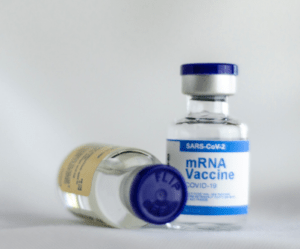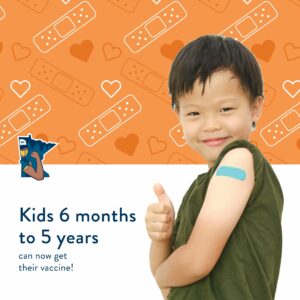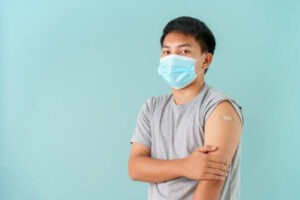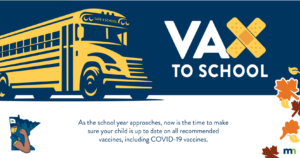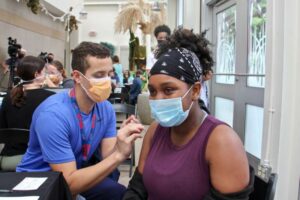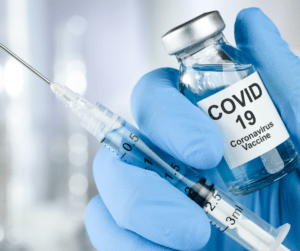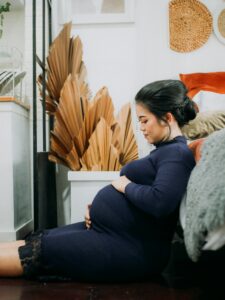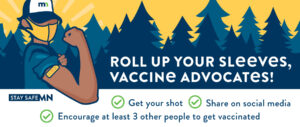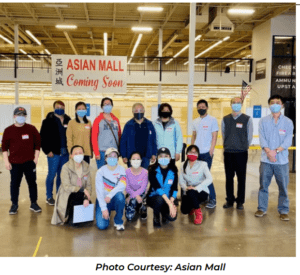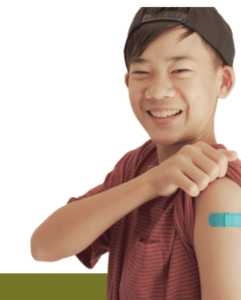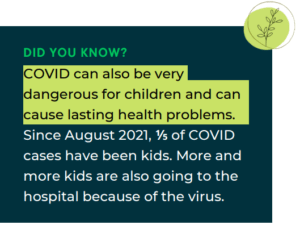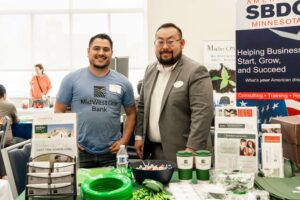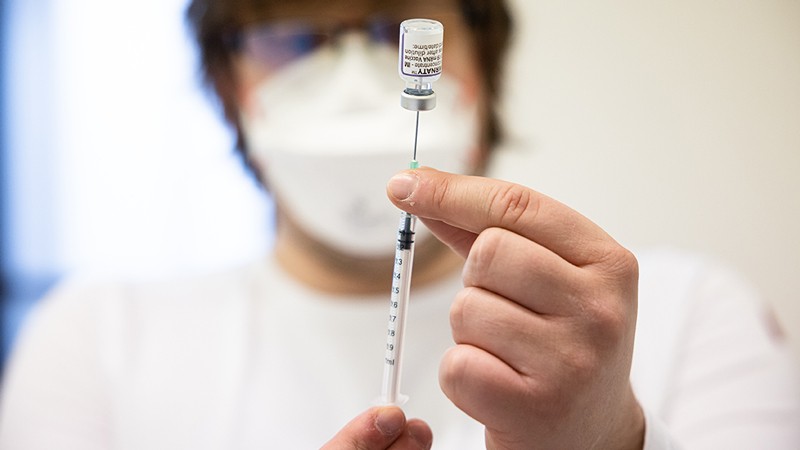Many of Minnesota’s African immigrants and refugees moved to the United States to give their children better futures, but COVID-19 has put that opportunity at risk. Parents raising young children during the pandemic have faced the crisis in two ways. First, there are the economic hardships of unemployment and the constant worry of how to provide for your family. Second, there are the difficulties of supporting children through the many changes COVID made to everyday life.
The transition to at-home learning left a lot of children feeling isolated and anxious about losing family members. Community health expert Fred Ndip explains, “It was terrifying. We lost a lot of community members both here in the US and back home, so it created a lot of anxiety.”
In addition to fearing for their family, students worried about falling behind in school. Children in the immigrant community faced additional barriers to at-home learning. When parents are not fluent in English or familiar with the US school system, it is harder for them to help children navigate virtual lessons. Limited internet access and library closures also made it harder for students to access support.
But immigrant communities are used to change, and the African commitment to community has fostered resilience. Melissa Nambangi, the Executive Director of the Minnesota African Women’s Association (MAWA) recognizes, “There are many differences between communities from various African countries. But we have something beautiful in common: we all value community. There is always room in our homes for more people. We will always take people in, provide a home-cooked meal, and support each other.”
Community is an important support system when it comes to parenting. As the saying goes, it takes a village to raise a child. Ndip says, “The pandemic took that communal aspect away from us, but vaccines can help us get it back.” Controlling the COVID pandemic with vaccines can help make it safer to reconnect with community and continue to support each other to create a better future for the next generation.
Staying safe and strong for family
It is no secret that mothers will do almost anything to keep their children safe and healthy. Nambangi shares that this instinct runs strong in African mothers like herself: “We cannot let our children be sick. We want them to have the least amount of pain possible. But as women, we were brought up to put ourselves last.”
Caring for children requires strength. To stay strong, it is important for parents to take care of themselves, too. The COVID disease can have serious and long-term health consequences for parents and children. COVID was the fifth most common cause of death between 2020 and 2022 for children ages 1 to 4[1]. But vaccines help reduce the risk of getting seriously ill. Vaccinated people are 10 times less likely than unvaccinated people to die from COVID.[2]
Vaccines also help protect the whole family, not just individuals. When parents get vaccinated, they are less likely to spread the dangerous disease to their kids. When it comes to COVID, protecting your kids means protecting yourself.
This is true during pregnancy as well. Studies show that COVID vaccines are safe for pregnant women and for babies. Vaccines are a common way for mothers to protect their children from many types of diseases. Nambangi recalls, “Any African woman who has become a mom in my time is used to the fact that while you’re pregnant, you receive certain vaccines. For the first couple of years of the child’s life, we must give them these vaccines…against measles, polio, and TB. We seek out vaccines because we know we are protecting the child.”
Just like other vaccines, the COVID vaccines protect reproductive health by preventing long-term health issues caused by COVID. Vaccines are just as helpful for fathers and boys as they are for mothers and girls. Getting vaccinated helps parents stay as strong as possible so that they can be there for their children and make sure that they do not suffer from COVID. As Nambangi shares, “I am vaccinated and it has helped me stay healthy. It makes a difference.”
Navigating health care together
Getting vaccinated is not just about the decision to protect oneself and one’s family from COVID. There are practical considerations as well. Navigating a new country is difficult enough, but learning to navigate a complex and expensive health care system is a big challenge for immigrant communities. It is important to know that COVID vaccines are free even without insurance, and the community is coming together to make care simple and safe.
Organizations like MAWA and Project HEALINGS were created to support immigrant communities to get the care they need. These organizations are independent of the government. Local community members, like Ndip and Nambangi, run these organizations and understand community needs such as translating health information into African languages and dialects.
MAWA and Project HEALINGS run their own COVID clinics where you can ask questions, find trusted health care resources, and get vaccinated if you choose. Ndip assures, “We know parents are already doing everything they can to keep their families safe. We’re here to help discuss questions and explain what resources are available, so everyone can make informed decisions for themselves.”
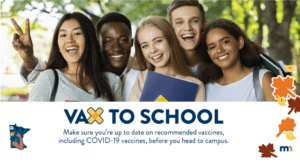
[1] Dr. Katherine E. Fleming-Dutra. (2022, June 17). COVID-19 epidemiology in children ages 6 months– 4 years. https://www.cdc.gov/vaccines/acip/meetings/downloads/slides-2022-06-17-18/02-COVID-Fleming-Dutra-508.pdf
[2] Chatterjee, R. (2022, June 18). CDC clears the way for vaccinations for children 6 months to 5 years old. NPR. https://www.npr.org/sections/health-shots/2022/06/18/1105929247/vaccinations-for-children-6-months-to-5-years-old-can-begin-after-cdc-clears-the
English Version Chinese Version French Version Hindi Version Hmong Version Khmer Version Oromo Version Somali Version Spanish Version Swahili Version Thai Version Vietnamese Version
